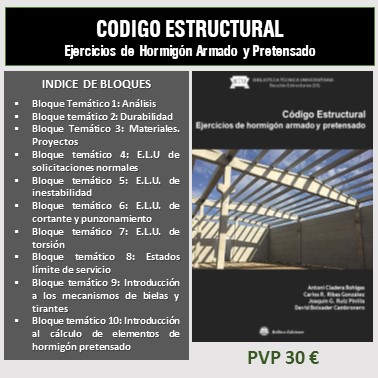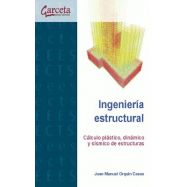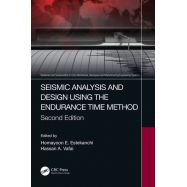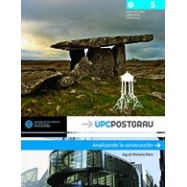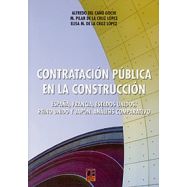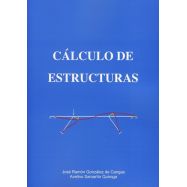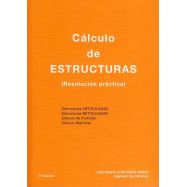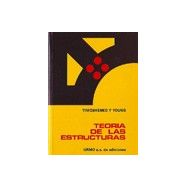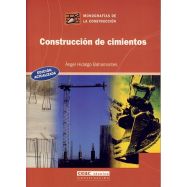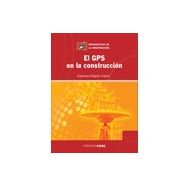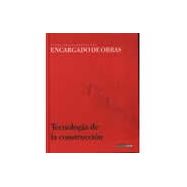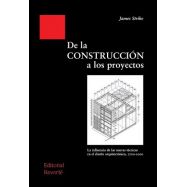Ningún producto
Materias
- BELLISCO EDICIONES. Nuestro Fondo Editorial
- FONDOS EDITORIALES EN DISTRIBUCION
- LIBROS TECNICOS EN INGLES
- ARQUITECTURA - URBANISMO
- AUTOMOCION - MOTORES - VEHICULOS
- AVIONICA - AERONAUTICA
- CALIDAD - EMPRESARIALES - GESTION
- CIENCIAS EXACTAS - MATEMATICAS
- CIENCIAS NATURALES Y APLICADAS
- CIENCIAS DE LA TIERRA - INGENIERIA DEL SUELO
- DICCIONARIOS TECNICOS
- ESTRUCTURAS - CONSTRUCCION
- Acústica (aislamiento, ruidos, vibraciones)
- Análisis de estructuras, resistencia de materiales, elasticidad, cálculo matricial
- Edificación
- Estructuras de Hormigón
- Estructuras Metálicas
- Estructuras de Madera
- Estructuras Mixtas
- Estructuras y Construcción en General
- Novedades Estructuras-Construccion
- rehabilitacion y restauracion
- Formación Profesional: Oficios en construccion, edificación y obras
-
- FORMACION PROFESIONAL
- HIDRAULICA - INGENIERIA SANITARIA - AGUAS
- INGENIERIA CIVIL - OBRAS PUBLICAS
- INGENIERIA MECANICA E INDUSTRIAL
- INSTALACIONES . GENERALES, EN EDIFICACION E INDUSTRIALES
- MATERIALES
- MEDIO AMBIENTE
- NORMATIVA
- OPOSICIONES
- PREVENCION DE RIESGOS LABORALES
- PROGRAMAS INFORMATICOS DE CALCULO
- TECNOLOGIA DE LOS ALIMENTOS: Industrias: Conservación, envasado y cadenas alimentarias
- TELECOMUNICACIONES - INFORMATICA - TECNOLOGIA DE LA INFORMACION
- OUTLET DE BELLISCO: Descuentos de hasta el 80%
- RELIGION, TEOLOGIA, MORAL Y ESPIRITUALIDAD
- VARIOS
- OFERTAS
- PROMOCIONES
- NEWSLETTER
- CATEGORIAS DESTACADAS
- ULTIMAS NOVEDADES BELLISCO
- ARQUITECTURA SOSTENBILE
- URBANISNO
- MATEMATICAS EN GENERAL
- AGRONOMOS-AGRICULTURA-FORESTALES
- ELECTROMAGENTISMO-ELECTRONICA-ELECTRICIDAD
- INGª Y MECÁNICA DEL SUELO. CIMENTACIONES
- TOPOGRAFIA, FOTOGRAMETRÍA, GEODESIA
- EDIFICACION
- ANALISIS DE ESTRUCTURAS, RESISTENCIA DE MATERIALES, ELASTICIDAD, CALCULO MATRICIAL
- OFICIOS VARIOS
- ABASTECIMIENTO Y DISTRIBUCION DE AGUA
- PUENTES
- TUNELES Y OBRAS SUBTERRANEAS
- MAQUINAS Y MECANISMOS
- SOLDADURA
- CLIMATIZACION
- INSTALACIONES DE AGUA
- INSTALACIONES ELECTRICAS CIENCIA E INGENIERIA DE MATERIALES
- ENERGIAS RENOVABLES
- DESARROLLO SOSTENIBLE
- INFORMATICA-SISTEMAS-FORMACION-PROGRAMAS
-
SEISMIC PERFORMANCE OF ASYMMETRIC BUILDING STRUCTURES
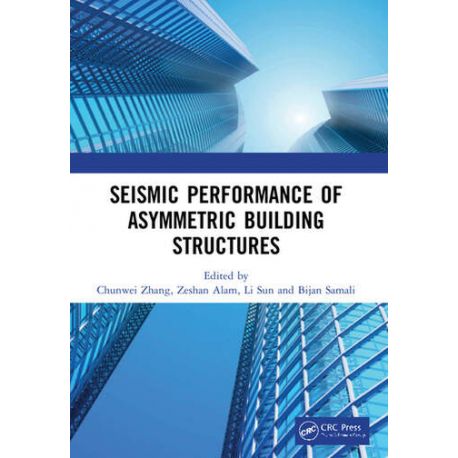 Ver más grande
Ver más grande Referencia: Código 10118
Agosto de 2022 - Chunwei Zhang - Refª 10118
Chunwei Zhang, Zeshan Alam, Li Sun, Bijan Samali
Agosto de 2022 Páginas: 254
Código 10118 ISBN/EAN: 9780367494360
Book Description
Seismic Performance of Asymmetric Building Structures presents detailed investigations on the effective assessment of structural seismic response under excessive torsional vibrations, demonstrating behavioural aspects from local response perspective to global seismic demands. The work provides comprehensive analytical, computational, experimental investigations, and proposes improved design guidelines that structural engineers can utilize to enhance the seismic design of asymmetric building structures.
Combining extensive experimental and numerical data stock for seismic performance assessment with a particular focus on asymmetric building structures, the book includes:
• An overview of asymmetric building structures from seismic damage perspective
• Local and global performance assessment of asymmetric structures under extreme seismic actions
• Post-earthquake damage evaluation from varying frequency trends
• Extended numerical applications for experimental response validations
• Evaluation of critical regions of asymmetric structure with stress concentration
• Statistical distribution of seismic response under varying design parameters
• Design guidelines for asymmetric building structures
This work's comprehensive evaluations are carried out with modern sensing techniques planned with meticulous attention to cover objectives with a particular focus on asymmetry in reinforced concrete and steel structures. It assesses various aspects of asymmetric building structures that are rarely dealt with in the current literature. It gathers fruitful information from various building design codes and explains their limitations in addressing damage-related challenges, which is not only useful for practicing engineers but also for academics.
The book will be invaluable for experts, researchers, students and practitioners from relevant areas, as well as for emergency preparedness managers.
Table of Contents
1 Introduction to the Seismic Performance of Asymmetric Building Stuctures, 2 A Review of Research on Design Guidelines and Seismic Performance of Asymmetric Building Structures, 3 Experimental Strategy and Seismic Loading Program, 4 Damage Response Investigation of Asymmetric Building Structures, 5 Numerical Evaluation of Complex Local Behavior, 6 Global Seismic Behaviour of Asymmetric Building Structures, 7 Influence of Design Parameters on the Statistical Distribution of Structural Response, 8 Seismic Design Guidelines for Asymmetric Building Structures, 9 Conclusions, Appendices.
Author(s)
Biography
Chunwei Zhang obtained his PhD degree from Harbin Institute of Technology in 2005. From 2005 to 2007, he was a research associate in Harbin Institute of Technology; From 2007 to 2010 he was an Assistant Professor at Harbin Institute of Technology. From 2010 to 2015, he was a senior lecturer at Western Sydney University. He is currently a Professor at Qingdao University of Technology and Director of the Structural Vibration Control group. He has also served as the Secretary-general for the Young Researcher's Forum at the 14th World Conference on Earthquake Engineering, and as committee member of the Dynamics and Control Division of American Society of Civil Engineer (ASCE). He has been in charge of and has participated in several major research programs, including general projects from National Science Foundation of China (NSFC), Key Technology R&D and 863 discovery and 973 major fundamental programs from Ministry of Science and Technology of China as well as industry grants etc. He was also the external assessor for National Science Foundation of China. His research interests include structural control, blast resistance and protective engineering. He has been awarded the first grade prize for Science and Technology Progress in 2009 by China Ministry of Education, and the Japan Society of Seismic Isolation (JSSI) award in 2004, and the best paper award for the eleventh international symposium on Structural Engineering.
Zeshan Alam obtained his Bachelor’s Degree in 2010 from the University of Engineering and Technology, Peshawar, Pakistan and his Master’s degree in Structural Engineering in 2012 from the National University of Sciences and Technology, Pakistan. He is currently a PhD candidate at the Centre for Infrastructure Engineering at Western Sydney University, Australia and a visiting research fellow at Qingdao University of Technology, China. His research interests are Earthquake Engineering and Structural Dynamics, Structural health monitoring and Performance assessment of asymmetric structures.
Li Sun obtained her PhD degree in 2006 from Dalian University of Technology. She is currently a Professor at the School of Civil Engineering, Shenyang Jianzhu University, China. Her research interests are structural health monitoring, damage identification and applications of intelligent materials in civil engineering.
Bijan Samali obtained his PhD degree in 1984 from George Washington University, USA. He is currently the Director of Centre for Infrastructure Engineering at Western Sydney University, Australia. Prior to joining Western Sydney University, Professor Samali held a Personal Chair in Structural Engineering at UTS since 1999. He is the author or co-author of over 500 scholarly publications (including over 150 journal publications), on a wide range of topics in the areas of structural engineering, structural dynamics, vibration and motion control, wind and earthquake engineering, bridge engineering, damage detection and health monitoring of structures including keynote addresses and invited papers. More recently, he has also focused on concrete technology and pavement engineering with particular emphasis on developing new, green and sustainable concrete and pavements with superior properties including geopolymer and self-compacting concrete. He has also been involved with several major projects as a specialist consultant over the years.
Descripción del libro
Desempeño sísmico de estructuras de edificios asimétricas presenta investigaciones detalladas sobre la evaluación efectiva de la respuesta sísmica estructural bajo vibraciones torsionales excesivas, demostrando aspectos de comportamiento desde la perspectiva de la respuesta local a las demandas sísmicas globales. El trabajo proporciona investigaciones analíticas, computacionales y experimentales integrales, y propone pautas de diseño mejoradas que los ingenieros estructurales pueden utilizar para mejorar el diseño sísmico de estructuras de edificios asimétricas.
Combinando un extenso stock de datos experimentales y numéricos para la evaluación del desempeño sísmico con un enfoque particular en las estructuras de construcción asimétricas, el libro incluye:
• Una descripción general de las estructuras de construcción asimétricas desde la perspectiva del daño sísmico
• Evaluación del desempeño local y global de estructuras asimétricas bajo acciones sísmicas extremas
• Post -evaluación de daños sísmicos a partir de diferentes tendencias de frecuencia
• Aplicaciones numéricas extendidas para validaciones de respuesta experimental
• Evaluación de regiones críticas de estructuras asimétricas con concentración de tensión
• Distribución estadística de la respuesta sísmica bajo diferentes parámetros de diseño
• Directrices de diseño para estructuras de edificios asimétricas
Las evaluaciones integrales de este trabajo se llevan a cabo con modernas técnicas de detección planificadas con una atención meticulosa para cubrir objetivos con un enfoque particular en la asimetría en estructuras de acero y hormigón armado. Evalúa varios aspectos de las estructuras de construcción asimétricas que rara vez se tratan en la literatura actual. Recopila información fructífera de varios códigos de diseño de edificios y explica sus limitaciones para abordar los desafíos relacionados con los daños, lo que no solo es útil para los ingenieros en ejercicio sino también para los académicos.
El libro será de gran valor para expertos, investigadores, estudiantes y profesionales de áreas relevantes, así como para los administradores de preparación para emergencias.
Tabla de contenido
1 Introducción al desempeño sísmico de estructuras de edificios asimétricas, 2 Revisión de la investigación sobre pautas de diseño y desempeño sísmico de estructuras de edificios asimétricas, 3 Estrategia experimental y programa de carga sísmica, 4 Investigación de respuesta a daños de estructuras de edificios asimétricas, 5 Evaluación numérica de estructuras locales complejas Comportamiento, 6 Comportamiento sísmico global de estructuras de edificios asimétricas, 7 Influencia de los parámetros de diseño en la distribución estadística de la respuesta estructural, 8 Directrices de diseño sísmico para estructuras de edificios asimétricas, 9 Conclusiones, Apéndices.
TAMBIEN LE PUEDE INTERESAR
- 52,25 €
- 58,90 €
- 28,00 €
- 118,00 €


